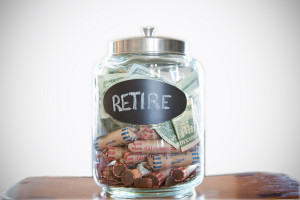Your car loan may be your most important debt. Chapter 7 gives you the control you need to handle it.
When you think about secured debts—those tied to collateral like a vehicle—it helps to look at these kinds of debts as two deals in one. You made a commitment to repay the car loan and then you agreed to back up that commitment by giving the creditor certain rights to your collateral.
The first deal—to repay the money—can almost always be discharged (erased) in bankruptcy. But the second deal—the rights in the collateral that the creditor has, known as a “lien” on the vehicle title—is not affected by your bankruptcy. So, you can wipe out the debt, but the creditor stays on the title and can get your vehicle if you stop paying. Your options in Chapter 7, and the creditor’s options, are tied to these two realities.
Keep or Surrender?
As long as you file your Chapter 7 case before your vehicle gets repossessed, the ball is in your court regarding whether to keep or surrender it.
Surrender the Vehicle
In most situations, if you want to surrender the vehicle, then a Chapter 7 bankruptcy is the time to do it. That’s because in the vast majority of vehicle loans, you would still owe part of the debt after the surrender— the “deficiency balance”—often a shockingly large amount. The reason for the large deficiency balance is because you usually owe more than the vehicle is worth, but also because the contract lets the creditor charge you for its repossession and resale costs. Surrendering your vehicle during your Chapter 7 case allows you to discharge that whole debt and not owe your lender any of those costs.
There is a theoretical possibility that the vehicle loan creditor could challenge your discharge of the “deficiency balance,” based on fraud or misrepresentation when you entered into the loan. These are rare, especially with vehicle loans.
Keep It
Whether you are current on the loan payments does not matter if you are surrendering the vehicle. But if you want to keep it, whether you are current and if not, how far behind you are, makes a big difference.
Keep the Vehicle When Current
As you can guess, it’s best if you are current on your car payments. Then you would just keep making the payments on time and you might sign a “reaffirmation agreement” to exclude the vehicle loan from the discharge of debts at the end of your Chapter 7 case. But whether you would sign such an agreement depends heavily on the advice of your bankruptcy attorney, an issue you should discuss thoroughly with them.
Some vehicle loan creditors insist on a reaffirmation agreement, at the full balance of the loan—it’s a take-it-or-leave-it proposition. In that case, if you want to keep the car or truck, you need to “reaffirm” the original debt, even if by this time the debt is larger than the value of the vehicle. But reaffirmation can be dangerous because if you don’t keep up the payments, you could still end up with a repossession and a hefty debt owed—AFTER having passed up the opportunity to discharge the debt during your bankruptcy case. So be sure to understand this clearly before reaffirming, especially if the balance is already more than the vehicle is worth.
Some creditors are willing to allow you to reaffirm for less than the full balance, so that the creditor avoids taking an even bigger loss if you surrender the vehicle. Talk to your attorney whether this is a possibility in your situation.
Keep the Vehicle When Not Current
If you are not current on the vehicle loan at the time your Chapter 7 case is filed, most of the time you will have to get current quickly to be able to keep the vehicle—usually within a month or two. That’s in part because for a “reaffirmation agreement” to be enforceable, it must be filed at the bankruptcy court before the discharge order is entered. Since that happens usually about three months after the case is filed, the creditor needs to decide quickly whether you will be able to catch up on the payments and reaffirm the debt.
Some vehicle creditors may be more flexible, such as by giving you more time to cure the arrearage. Your attorney will be able to discuss this issue with your creditor, if it arises.

